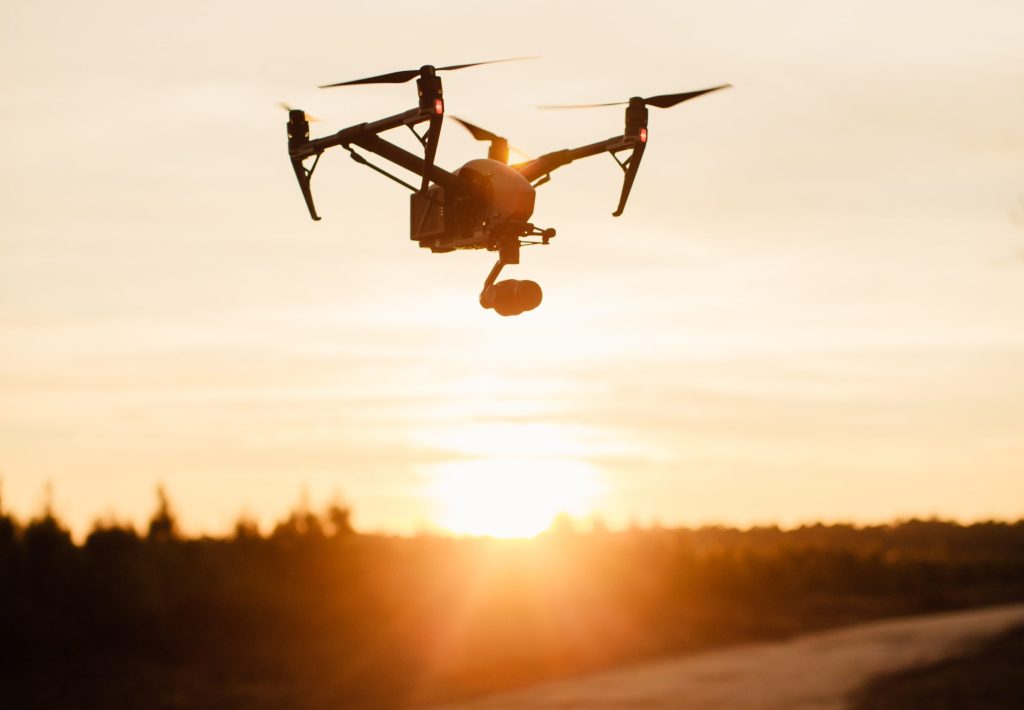Remote ID Compliance Requirements Start This Friday for Drone Manufacturers—Here’s What You Need to Know
BY Zacc Dukowitz
14 September 2022This Friday, September 16, the FAA’s Remote ID requirements for drone manufacturers go into effect.
But don’t worry! Friday’s compliance enforcement doesn’t have any implications for drone pilots just yet.
The deadline that does concern U.S. drone pilots is still one year away. On September 16, 2023—one year from this Friday—all drone pilots in the U.S. will be required to fly drones that are compliant with Remote ID requirements.
[Related read: What Is a Remote ID Module? A Complete Guide to FAA-Compliant Remote ID Broadcast Modules]
For now, all that’s happening is that drone manufacturers will have to begin making Remote ID-compliant drones.
And the FAA has actually pushed back enforcement for the manufacturing compliance, acknowledging that many companies are behind and struggling to meet the deadline.
This delay was announced last week, when the FAA said it would use “enforcement discretion” to give companies more time to comply.
The FAA announced at @ExpoUAV that it will use enforcement discretion for drone manufacturers who are making progress towards Remote ID compliance through December 16, 2022. Full details will be posted to the Federal Register on September 8. #expouav pic.twitter.com/b39b6Qnj3K
— FAA Drone Zone (@FAADroneZone) September 7, 2022
What Do Companies Have to Do to Be Compliant?
For a drone to be compliant with the Remote ID rules, it has to be able to broadcast:
- A unique identifier for the drone;
- The drone’s latitude, longitude, geometric altitude, and velocity;
- An indication of the latitude, longitude, and geometric altitude of control station (standard) or take-off location (broadcast module);
- A time mark; and
- Emergency status (Standard Remote ID Drone only)
– From the FAA’s rule on Remote ID
There are two ways for a drone to broadcast this information:
1. Standard Remote ID—the drone has a Remote ID capability built into it.

2. Remote ID Broadcast Module—the drone has a Remote ID module attached to it.

Alternatively, if you want to fly without Remote ID you’ll be able to do so in designated areas called “FAA-Recognized Identification Areas” or FRIAs.
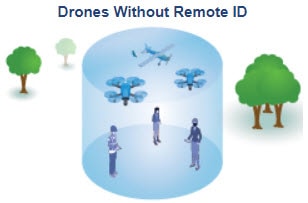
The compliance requirement that goes into effect this Friday applies to the first of the two options above—Standard Remote ID.
Starting this Friday, drone manufacturers must start building Remote ID capabilities into the drones they sell. (As we’ve already noted, drone companies are being given extra time to meet this deadline.)
The second option (Remote ID Broadcast Module) will be available to drone pilots who are flying older drones that were not made to be compliant with Remote ID requirements.
But it looks like most people won’t have to worry about getting a module—the majority of drone companies have already announced that they’ll make current drone models Remote ID-compliant via a software update, without the need for additional hardware.
It’s also worth nothing that not all drones need to be compliant with Remote ID rules.
Here are the exceptions:
- Drones flown for U.S. Department of Defense or other federal agencies with an exemption to the operating rules.
- Flights within an FAA-recognized Identification Area (FRIA)
- Drones that weigh 0.55 pounds or less and that are used exclusively for recreational purposes
Companies that Are Already Compliant
Some companies have shared that they are already prepared for Remote ID compliance—and some haven’t.
Here are the ones that are ready to go for this Friday.
Ascent AeroSystems

Credit: Ascent AeroSystems
Ascent’s Spirit drone is already compliant with Remote ID, as the company recently announced. The Spirit is also on the Pentagon’s Blue UAS list of drones approved for use by the federal government.
Auterion

Credit: Auterion
Auterion has shared that it will release a software update to make any drone that uses its software Remote ID-compliant. The update will add support for OpenDroneID, which implements ASTM F3411 specification for Remote ID and tracking.
DJI
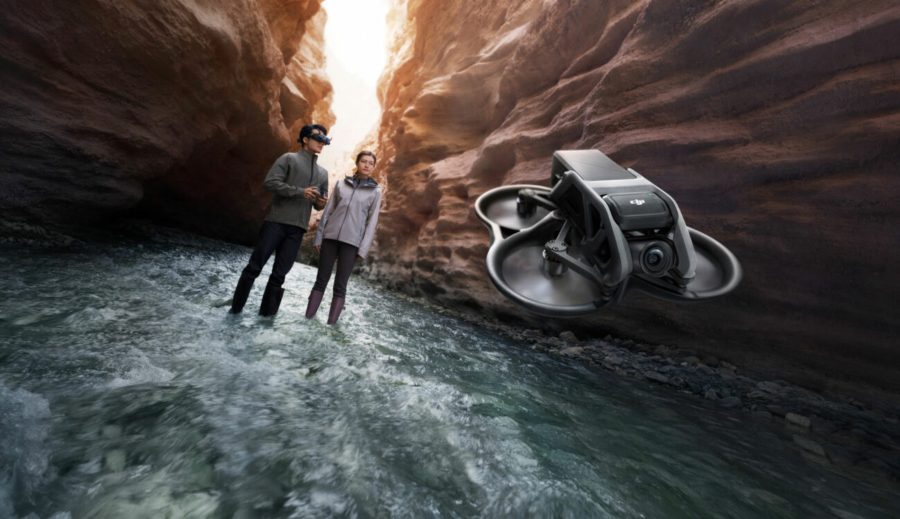
The DJI Avata | Credit: DJI
The FAA has reportedly already approved several DJI drones as compliant with Remote ID, including:
- The Air 2S
- The Avata
- The Matrice 30 and Matrice 30T
- The DJI Mavic 3 Standard and Cine
- The Mini 3 Pro
Freefly
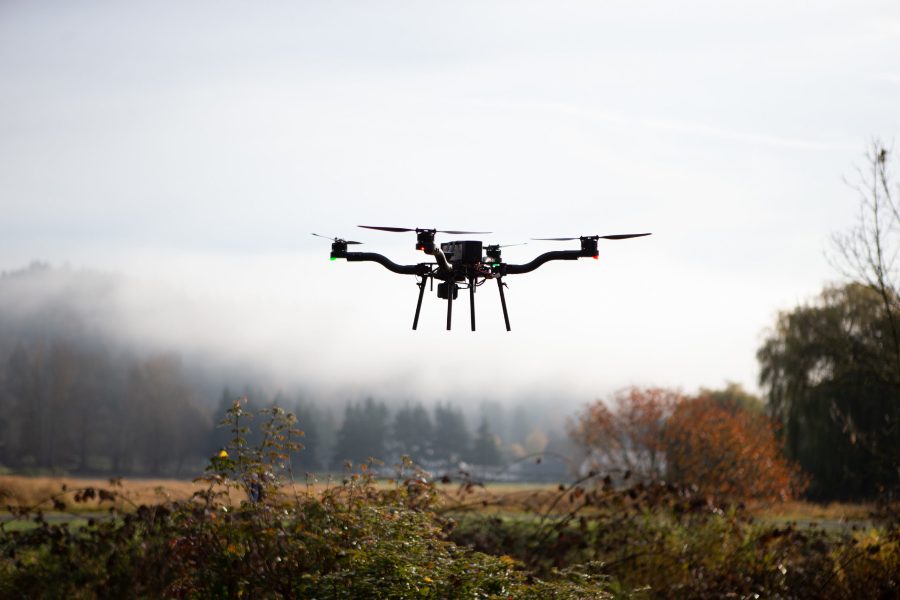
The Freefly Astro | Credit: Freefly
According to Freefly, its drones will be made Remote ID-compliant via a software update.
Skydio
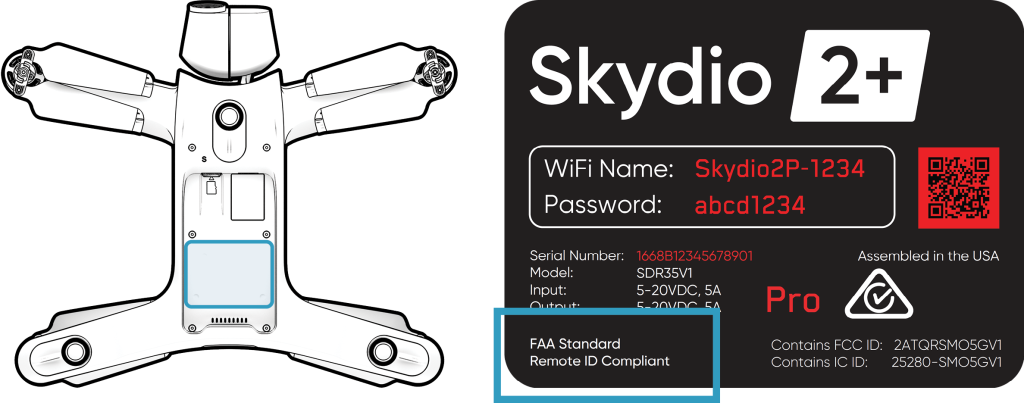
Credit: Skydio
Skydio has issued a statement saying that all drones it makes on or after September 16, 2022 will be compliant with Remote ID, and that most likely it will provide drones made before September 16 with a software update to make them compliant (though it’s still working this out).
Skydio has also shared that its Remote ID-compliant drones will be explicitly labeled as such, as shown in the image above.
